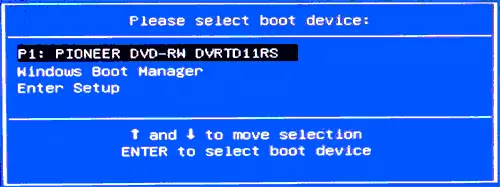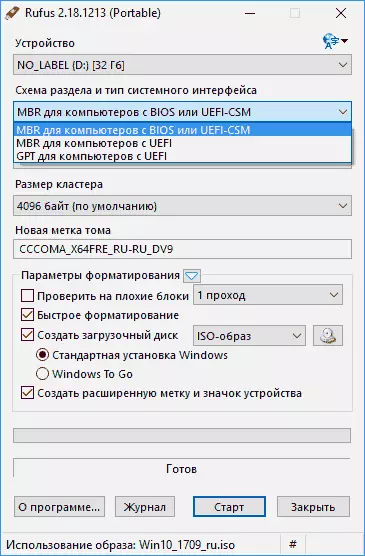
In this instruction, details about the reasons why the BIOS does not see the boot flash drive or it does not show in the download menu and how to fix it. See also: How to use Boot Menu on a computer or laptop.
Loading Legacy and EFI, Secure Boot

The most common reason that the loading flash drive is not visible to the boot menu - the load mismatch that is supported by this flash drive to the loading mode displayed in the BIOS (UEFI).
Most modern computers and laptops support two loading modes: EFI and LEGACY, while only the first one is turned on by default (although, on the contrary).
If you record a USB drive for Legacy-mode (Windows 7, many Live CD), and only the EFI load is enabled to the BIOS, then such a flash drive will not be visible as booting and select it in Boot Menu will not work.
Solutions in this situation may be as follows:
- Enable support for the desired loading mode to BIOS.
- Write a USB flash drive Otherwise to support the desired download mode, if possible (for some images, especially not new, only loading LEGACY is possible).
As for the first point, it is most often necessary to include support for the LEGACY loading mode. This is usually done on the BOOT tab in the BIOS (see how to go to the BIOS), and the item you want to enable (set to Enabled mode) may be called:
- Legacy Support, Legacy Boot
- COMPATILITY SUPPORT MODE (CSM)
- Sometimes this item looks like an OS selection in BIOS. Those. The name of the item is OS, and the options of the item values include Windows 10 or 8 (for EFI downloads) and Windows 7 or Oter OS (for Legacy Download).
Additionally, when using a boot flash drive, which supports only the LEGACY loading, you should disable Secure Boot, see how to disable Secure Boot.
On the second item: If the image recorded on the flash drive supports the download and for EFI and for the legacy mode, you can simply write it otherwise without changing the BIOS parameters (however, for images other than the original Windows 10, 8.1 and 8 anyway may still be disconnected Secure Boot).
It is easiest to do this using a free RUFUS program program - it makes it easy to choose which type of download should write a drive, the basic two options - MBR for computers with BIOS or UEFI-CSM (Legacy), GPT for computers with UEFI (EFI download) .

More on the program and where to download - Creating a bootable flash drive in RUFUS.
Note: If we are talking about the original Windows 10 or 8.1 image, you can write it in the official way, such a flash drive will maintain two types of boot at once, see the Windows 10 boot flash drive.
Additional reasons for the flash drive not displayed in Boot Menu and BIOS
In conclusion, some more nuances who, in my experience, are not fully understood by novice users, because of what problems arise and the inability to load from the flash drive to the BIOS or select it in Boot Menu.
- In most modern versions of the BIOS in order to load the download from the flash drive in the settings, it should be pre-connected (so that it is determined by the computer). If it is disabled, it is not displayed (connect, reboot the computer, we enter the BIOS). Also consider that "USB-HDD" in some old motherboards is not a flash drive. Read more: How to download the download from the flash drive to the BIOS.
- In order for USB the drive to be visible to Boot Menu, it should be bootable. Sometimes users simply copy the ISO (the image file itself) on the USB flash drive (this does not make it loaded), sometimes - the same manually copies the contents of the drive to the drive (it works only for EFI downloads and only for FAT32 drives). It may be useful: the best programs for creating a loading flash drive.
It seems that everything. If you remember any other features related to the topic, I will definitely add the material.
